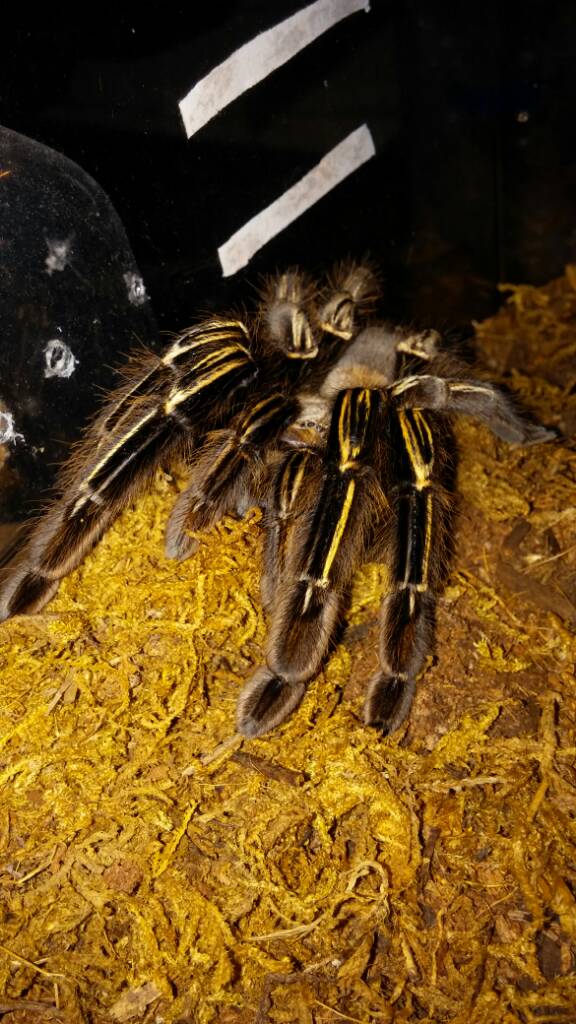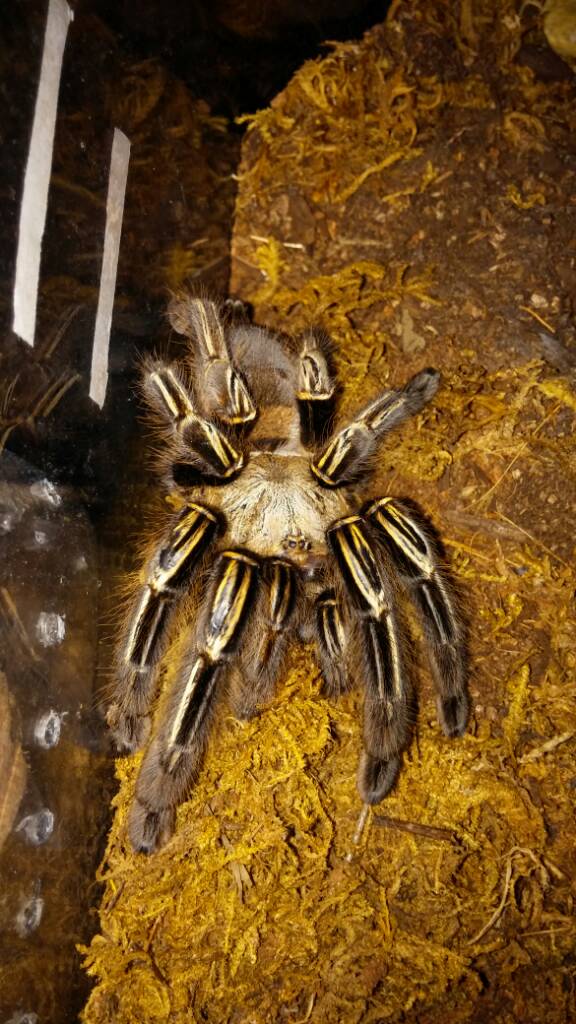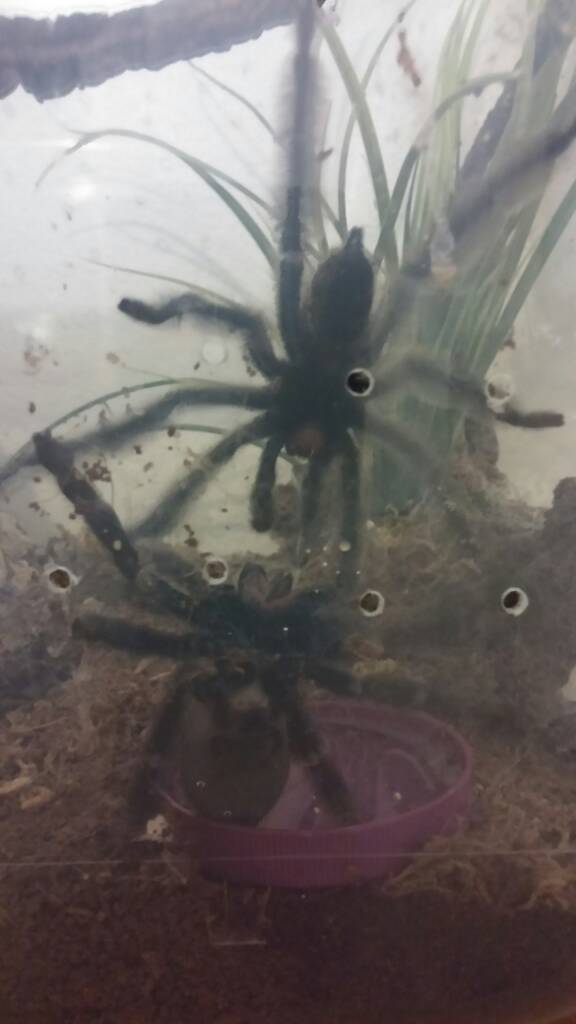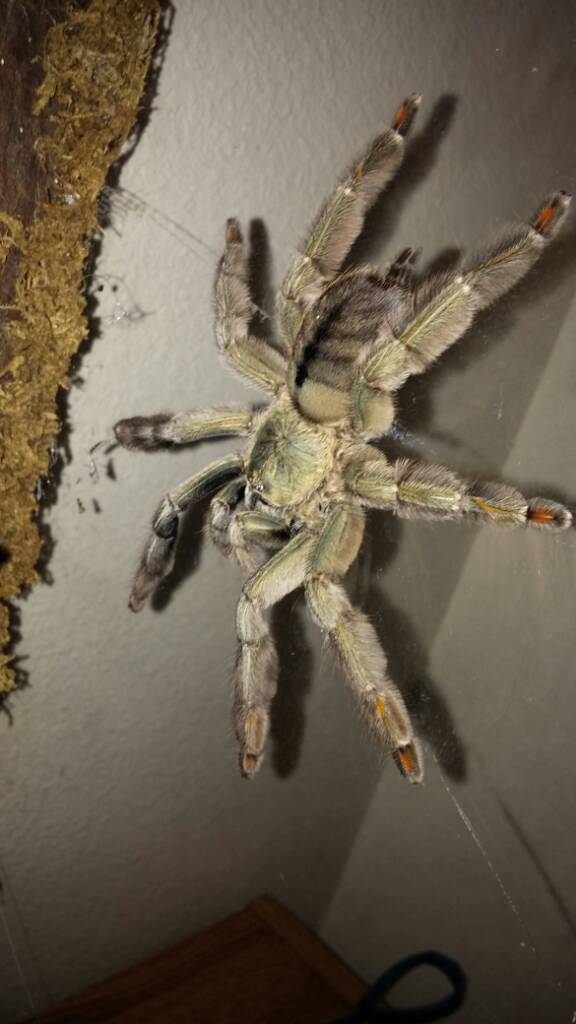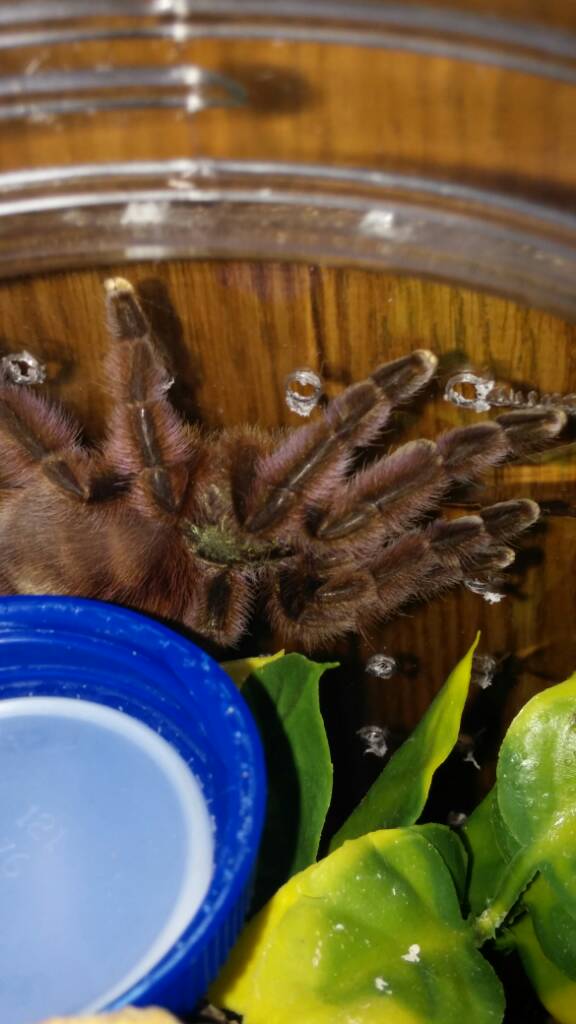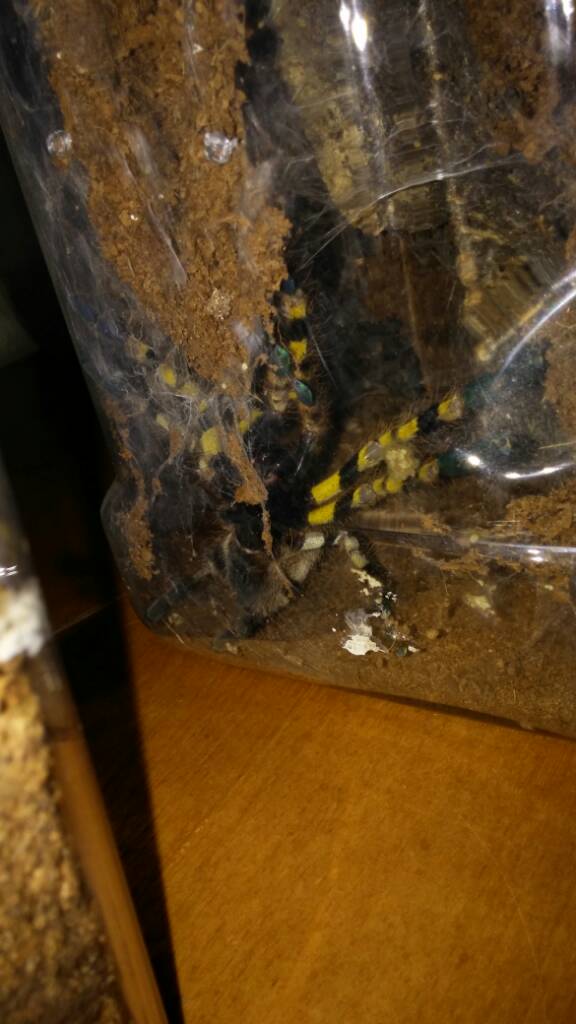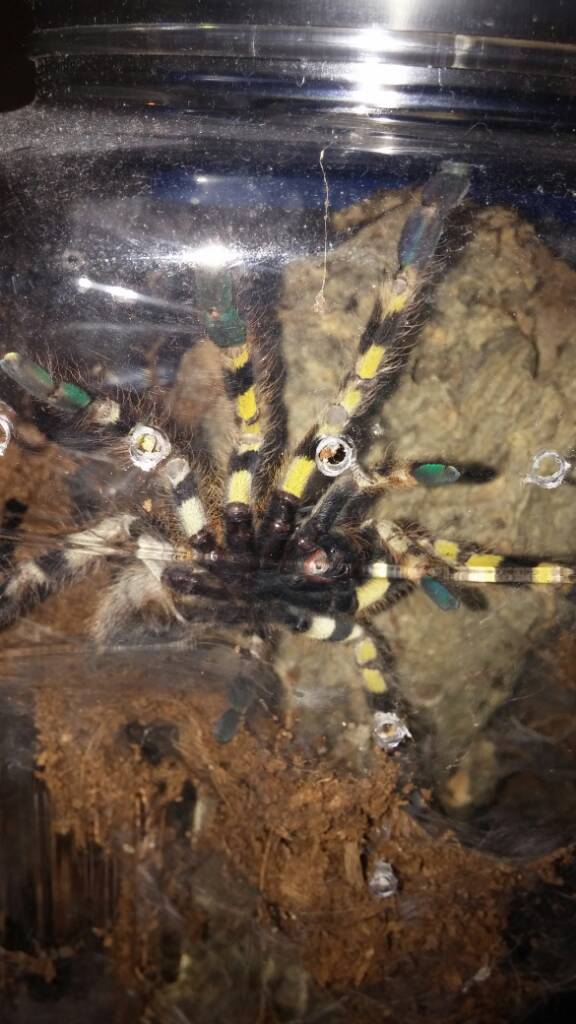- Messages
- 1,679
Females get their white coloration usually around 2-3 inches. They also have a completely different build, which also becomes more evident around that size. They are much more stocky and have much larger/wider chelicerae as opposed to the much more narrow chelicerae that males have. That last part applies to most species though. The white coloration is unmistakable on the females though.
